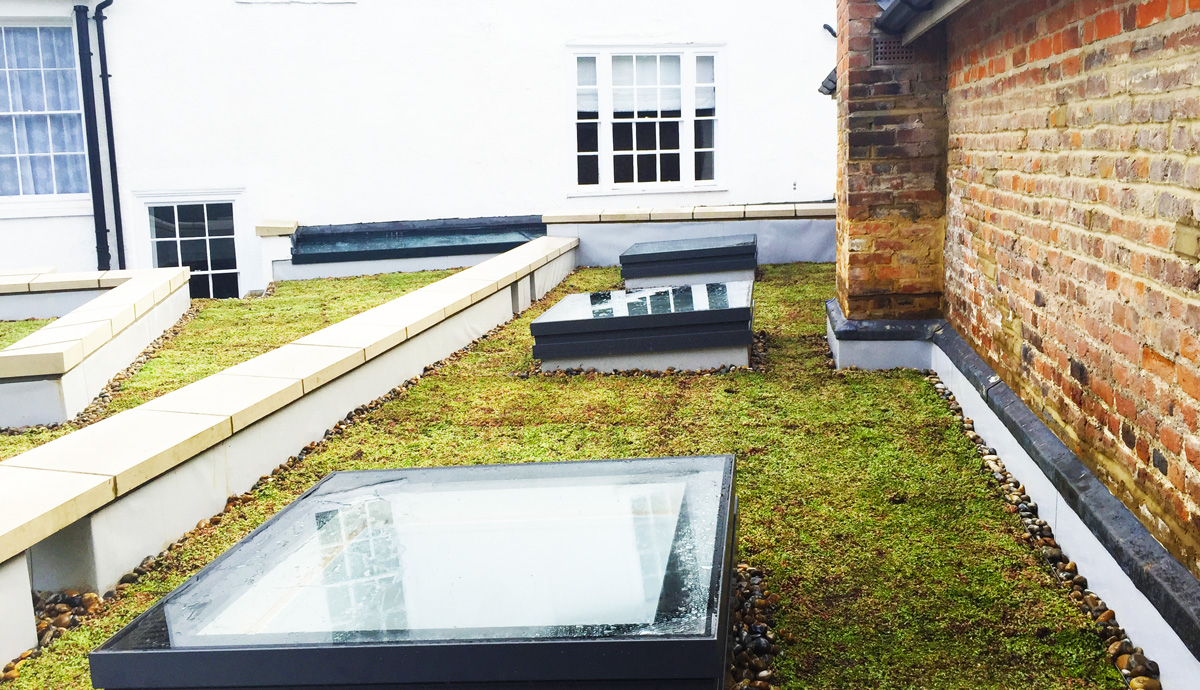

- #Disadvantages of green roofs install#
- #Disadvantages of green roofs full#
- #Disadvantages of green roofs professional#
This is an important matter, because it is the perceptions of those positioned to install that will allow, or block, wider adoption. What has been less considered is perspectives and understandings of building owners/occupiers regarding units they control ( Lamond et al., 2014a Hendricks and Calkins, 2006). However, other published work has indicated that public awareness and understanding of green roofs remains low from the USA ( Jungels et al., 2013) and Canada ( Loder, 2014), through Spain ( Fernandez-Cañero et al., 2013), France ( Nappi-Choulet and Labussière, 2015), Australia ( Tassicker et al., 2016), Iran ( Kalantari et al., 2016) and Singapore ( Yuen and Nyuk Hien, 2005), to Malaysia ( Zahir et al., 2014) and Hong Kong ( Zhang et al., 2012). Unlike municipal infrastructure though, green roofs will require the approval of individual building owners and occupiers, as well as suitable properties for installation ( Lamond et al., 2014b).Ī range of literature has been produced around the viability, effectiveness and performance of green roofs in reducing water runoff and offering further benefits ( Hoang and Fenner,2014 Wilkinson et al., 2016, 2015 and Oberndorfer et al., 2007).

The retrofitting of green roofs offers a major advantage over other forms of urban green infrastructure in not requiring more land to operate ( Digman et al., 2012). ( Ward et al., 2012 O’Donnell et al., 2017), which may be of interest to policy-makers ( Ashley and Nowell, 2010). When done sensitively, in the manner of Water Sensitive Urban Design (WSUD) ( Wong and Eadie, 2000), this could also offer a range of ecosystem service benefits: improvements in aesthetics, biodiversity and air quality, etc. It is however possible to return parts of the built environment to a more natural state. Increases in hard-standing through urbanisation and “urban creep” intensification ( Wright et al., 2011) will impact flood-risk by reducing available permeable ground ( Wheater and Evans, 2009) and a range of other ecosystem services (aesthetics, biodiversity, air and water quality, Gill et al., 2007 O’Donnell et al., 2017). In an ever-more urbanising world, the spread of impermeable surfaces increases apace as greater numbers live in urban environments ( Jha et al., 2011).
#Disadvantages of green roofs professional#
Professional guidance has been published by the RICS ( Wilkinson et al., 2016), but awareness remains low.Ī short literature review follows that briefly outlines the paper’s theoretical framing, then Methods and Findings, which continue the literature review in presenting and reflecting upon data, before discussing and concluding with significant observations and policy implications. It concludes in asking whether this might be encouraged through more conversations around their wider values, explicitly addressing the spread of benefits and so fair allocation of costs and large-scale, high-profile municipal authority projects connected with professional and public education and training programmes. The paper argues that if authorities wish to improve uptake, then focus should be placed upon raising green roofs’ profile, helping them seem more possible and desirable and shifting norms and best practice.

When asked to consider the possibility, concerns over costs and risks dominated thinking, whilst potential benefits were not easily perceived, believed or felt relevant. The paper argues that reduced awareness and understanding from businesses without green roofs means the technology is not on such businesses' radar. It compares interview findings from cohorts with and without green roofs, to understand the potential for engendering more positive attitudes. This paper explores barriers to the wider adoption of green roofs represented by the perceptions and attitudes of building owners/occupiers.
#Disadvantages of green roofs full#
The full terms of this licence may be seen at Anyone may reproduce, distribute, translate and create derivative works of this article (for both commercial and non-commercial purposes), subject to full attribution to the original publication and authors. This article is published under the Creative Commons Attribution (CC BY 4.0) licence. Copyright © 2019, Glyn Everett and Jessica Lamond.


 0 kommentar(er)
0 kommentar(er)
